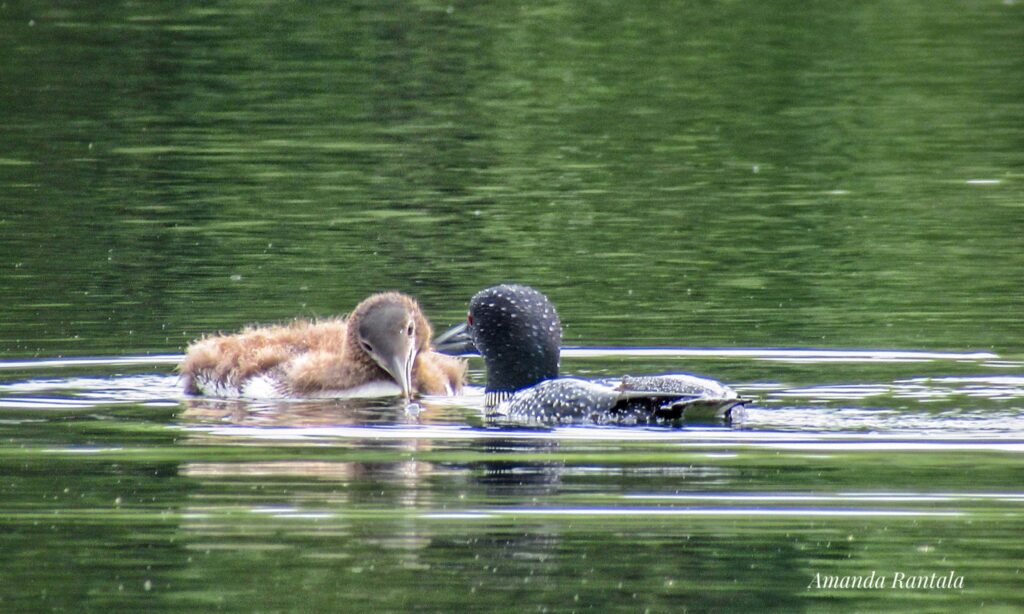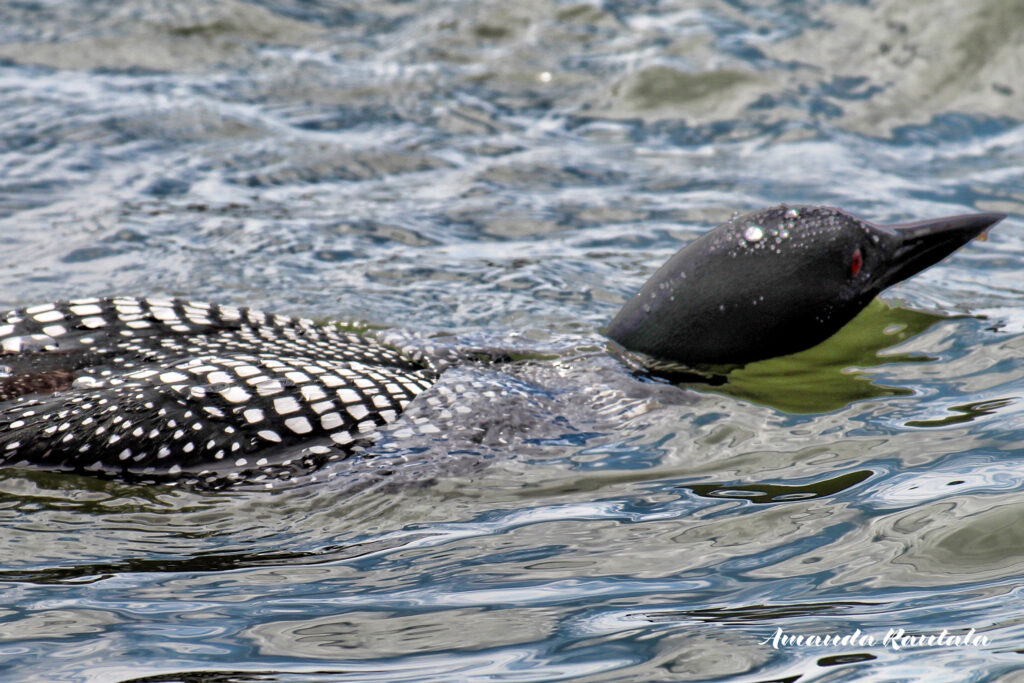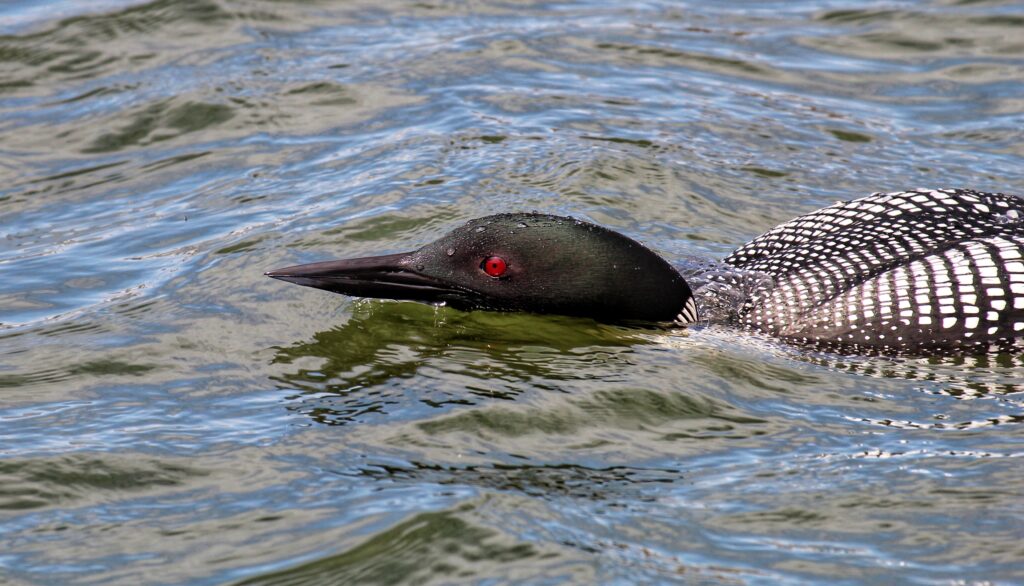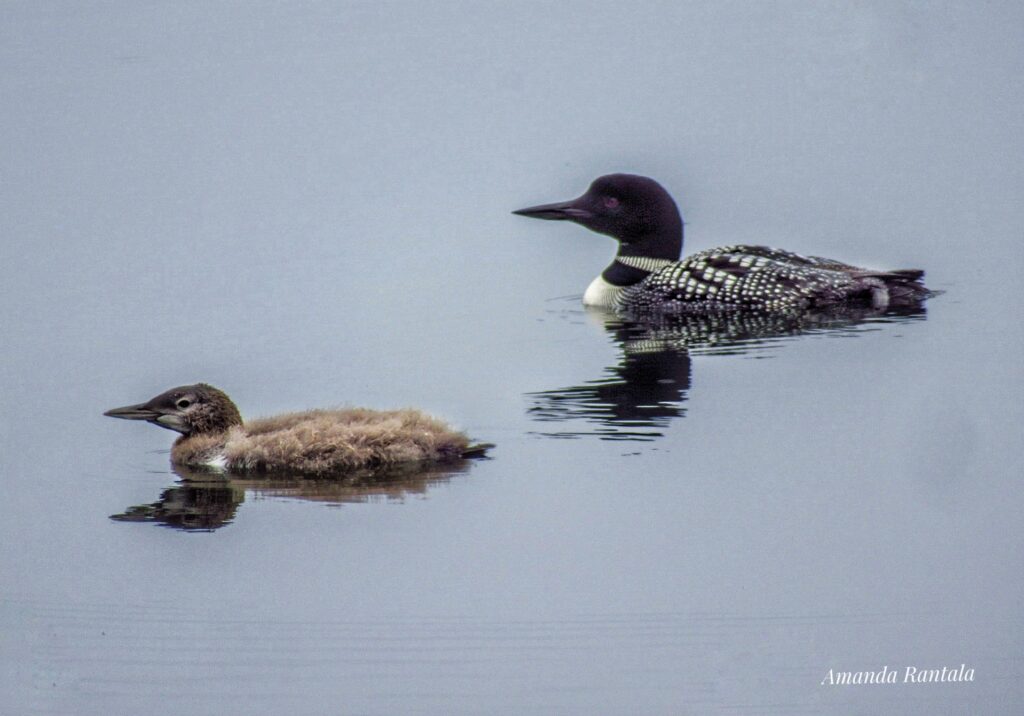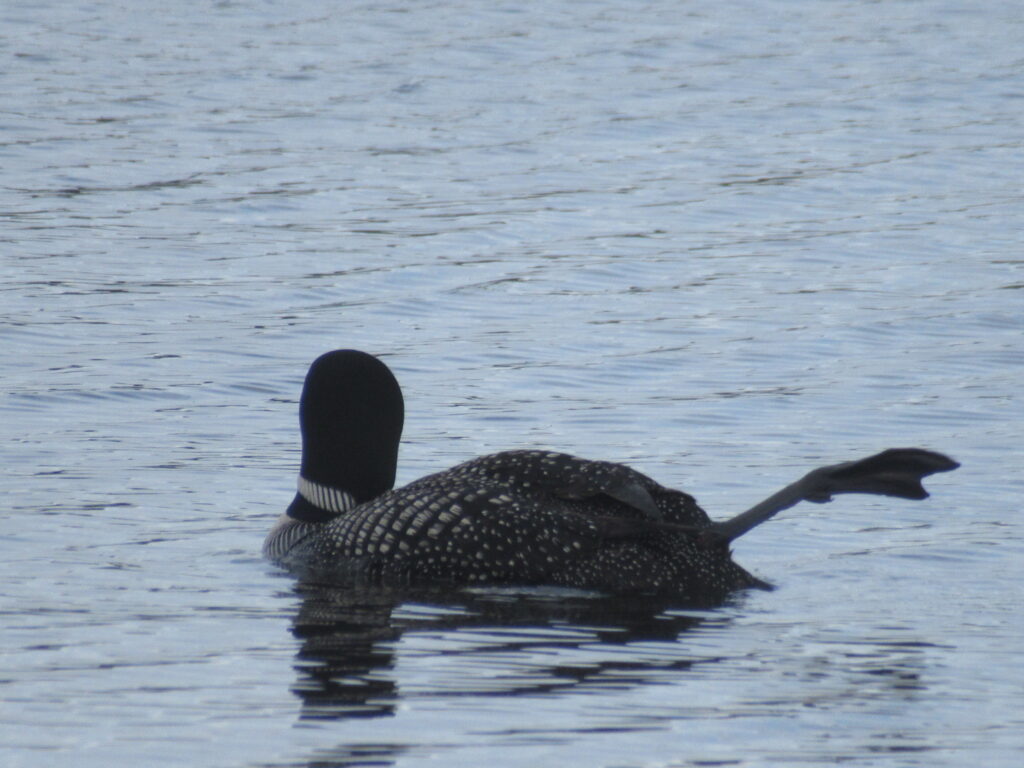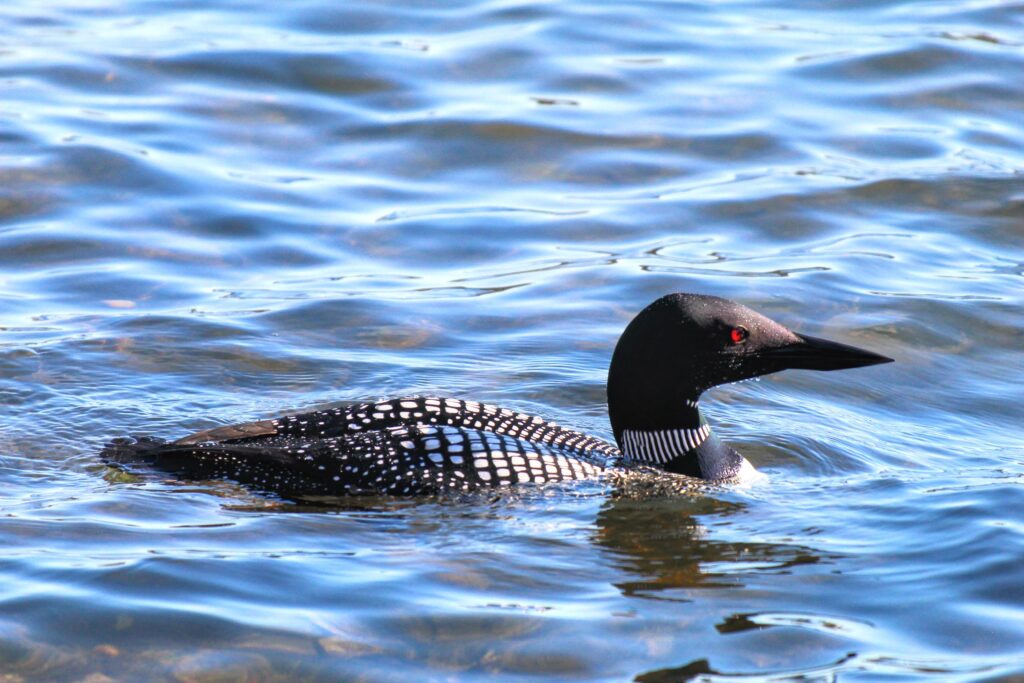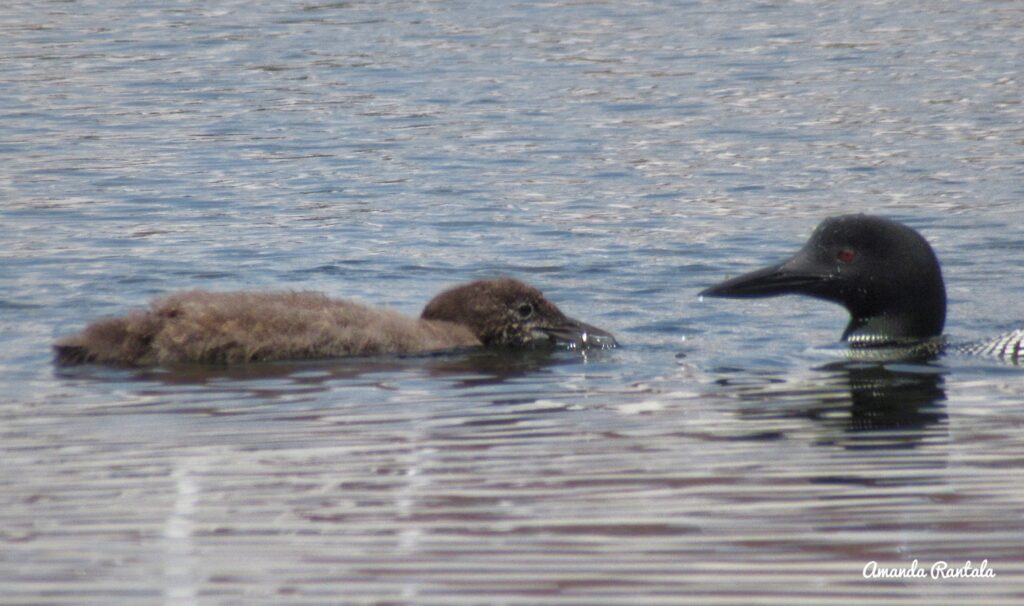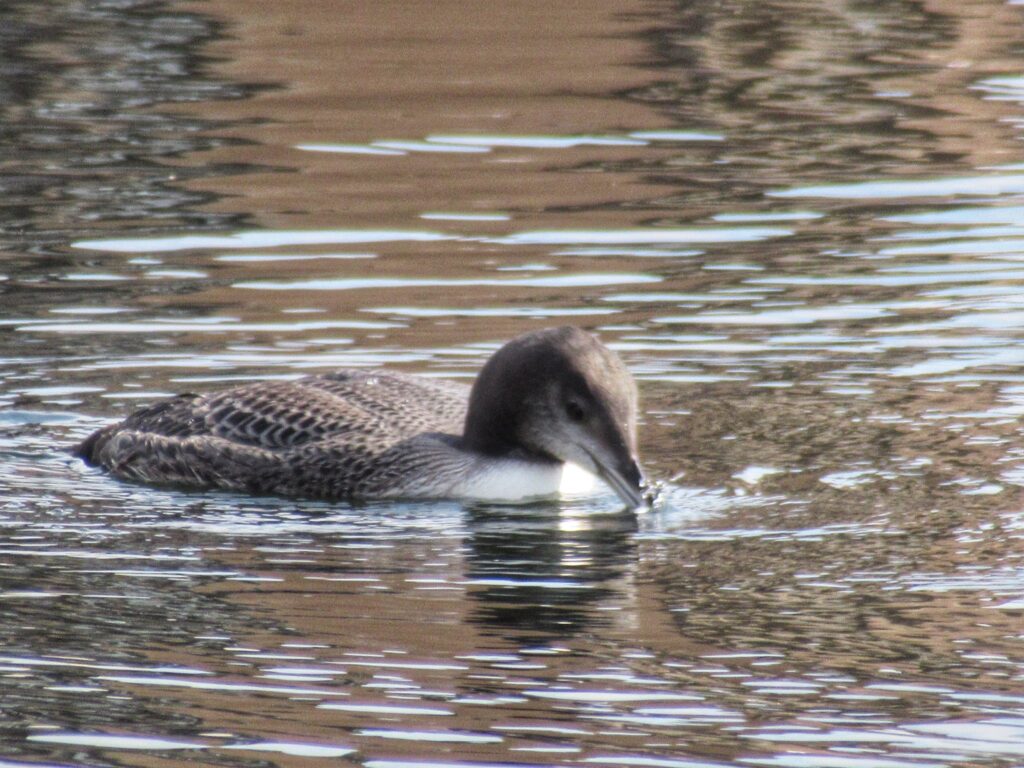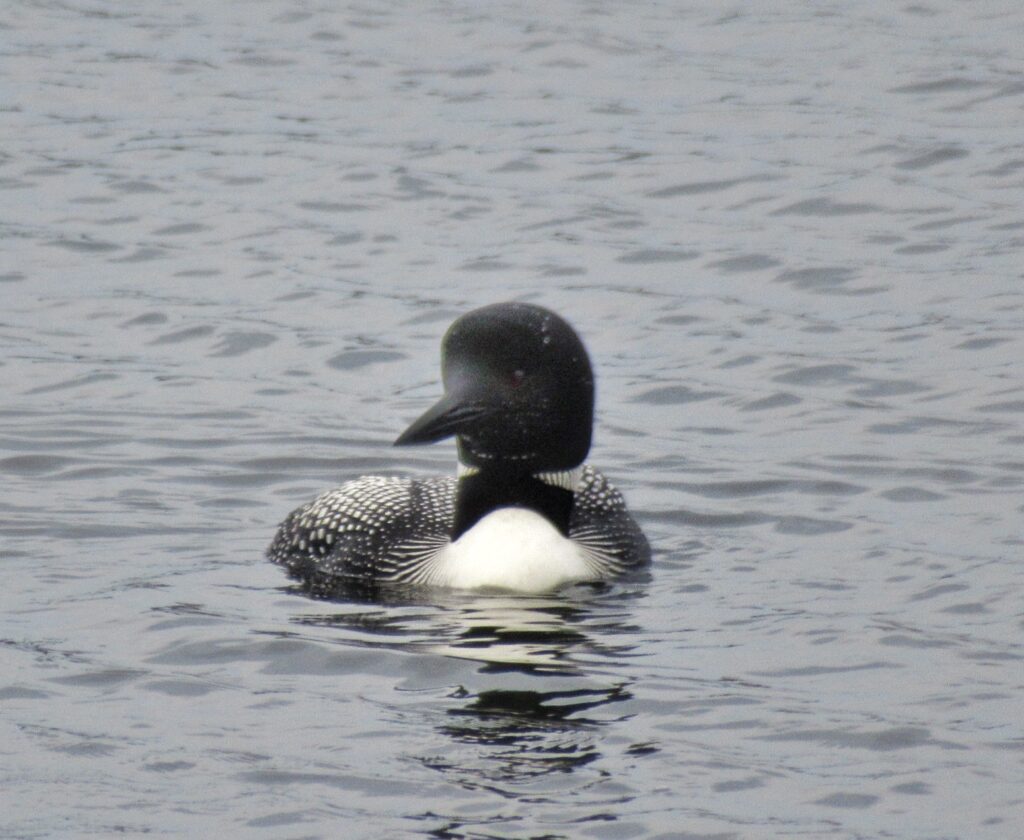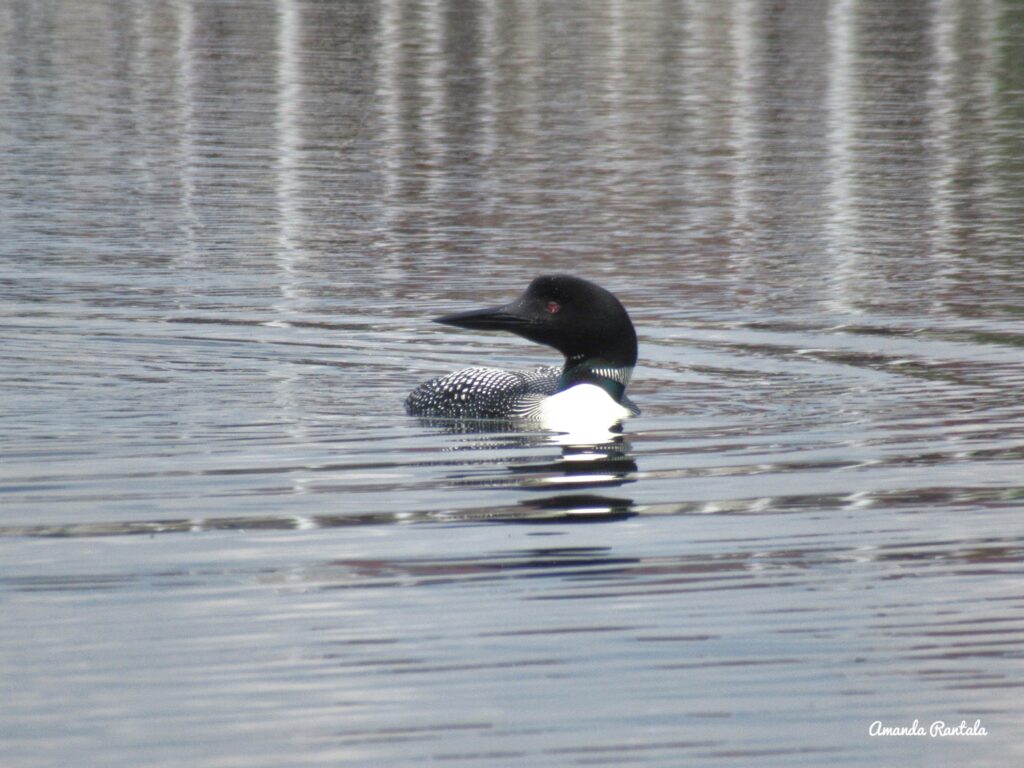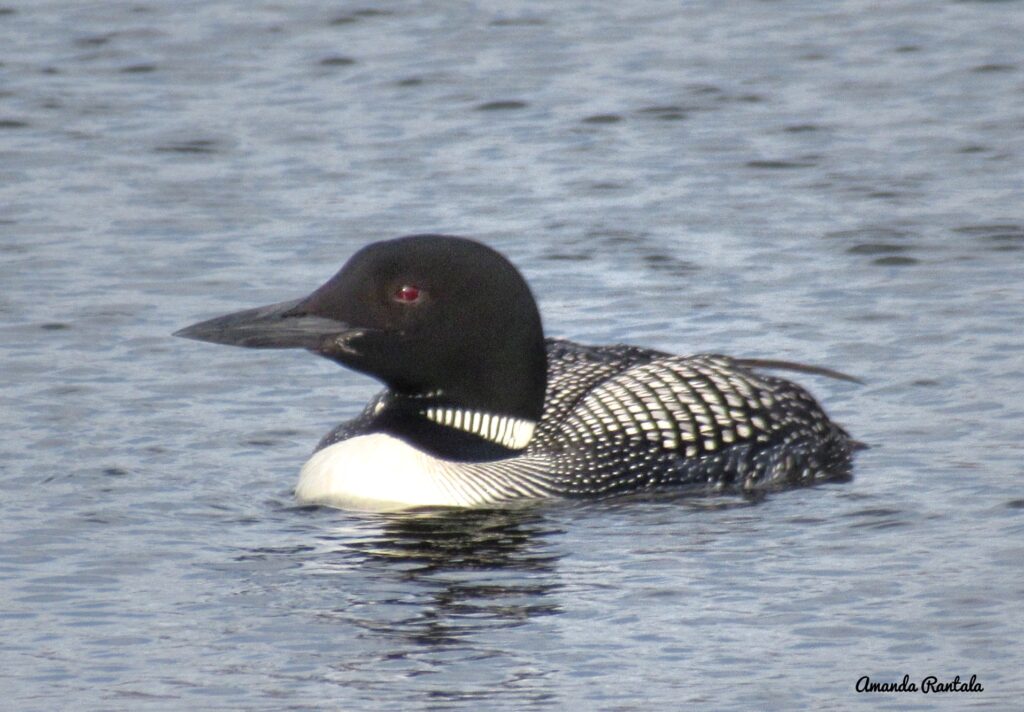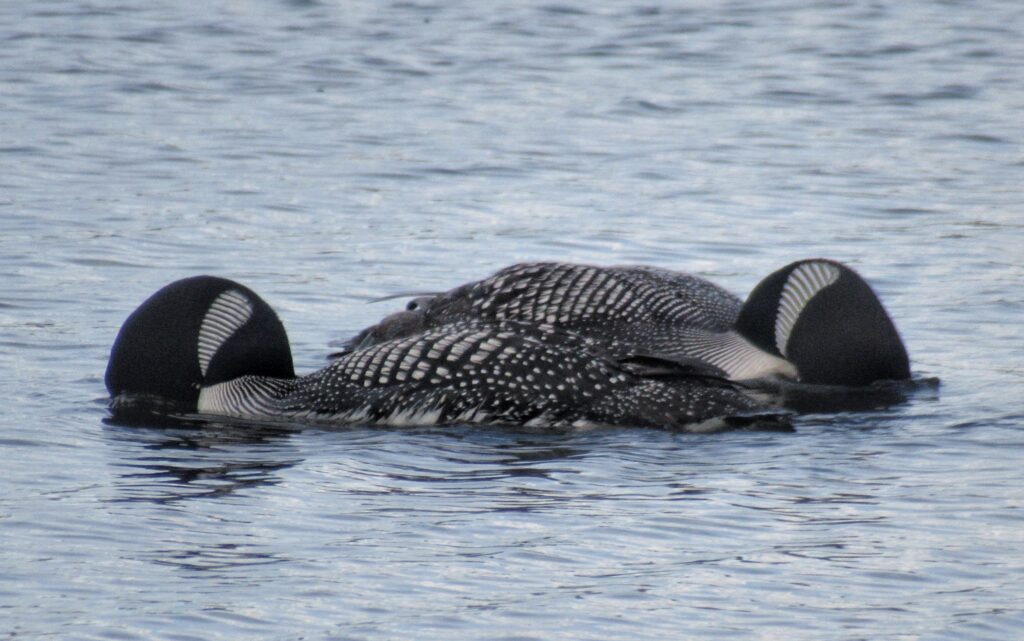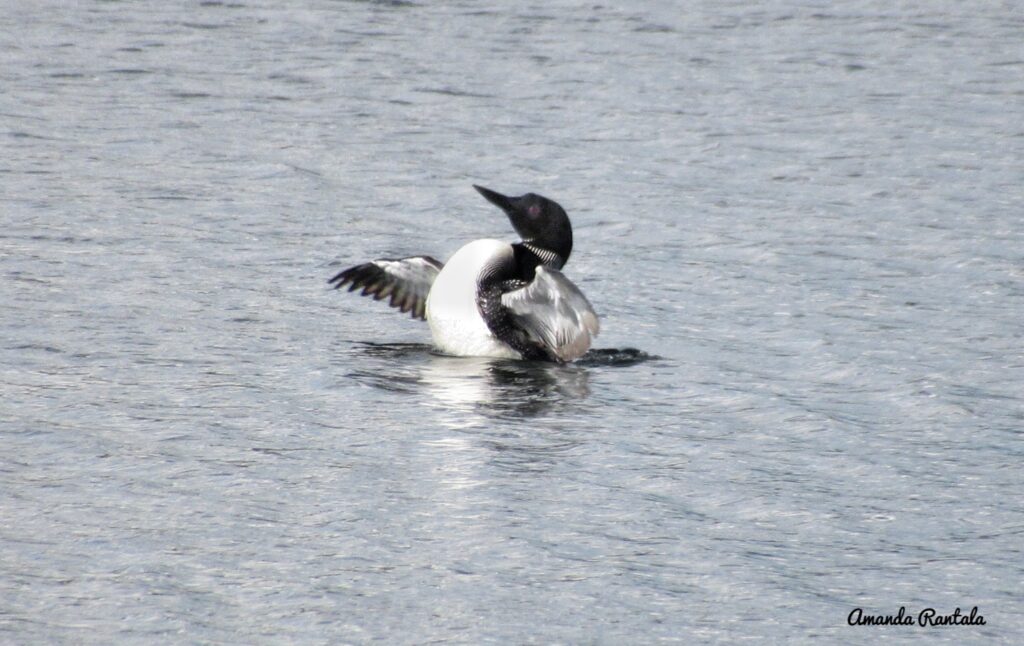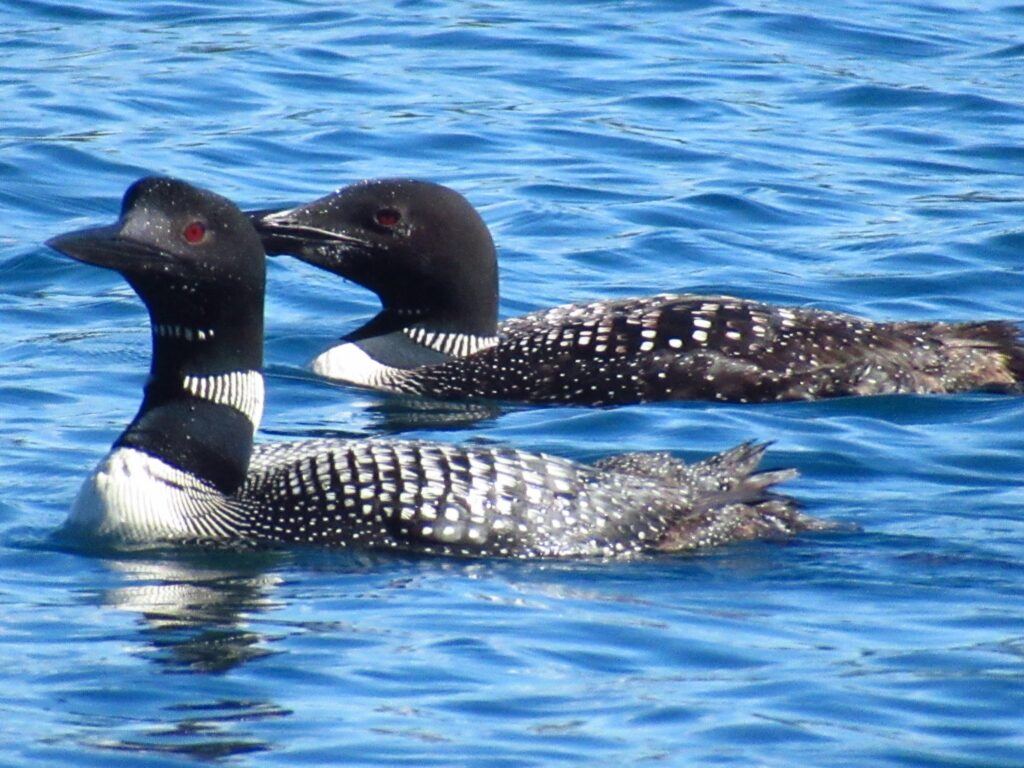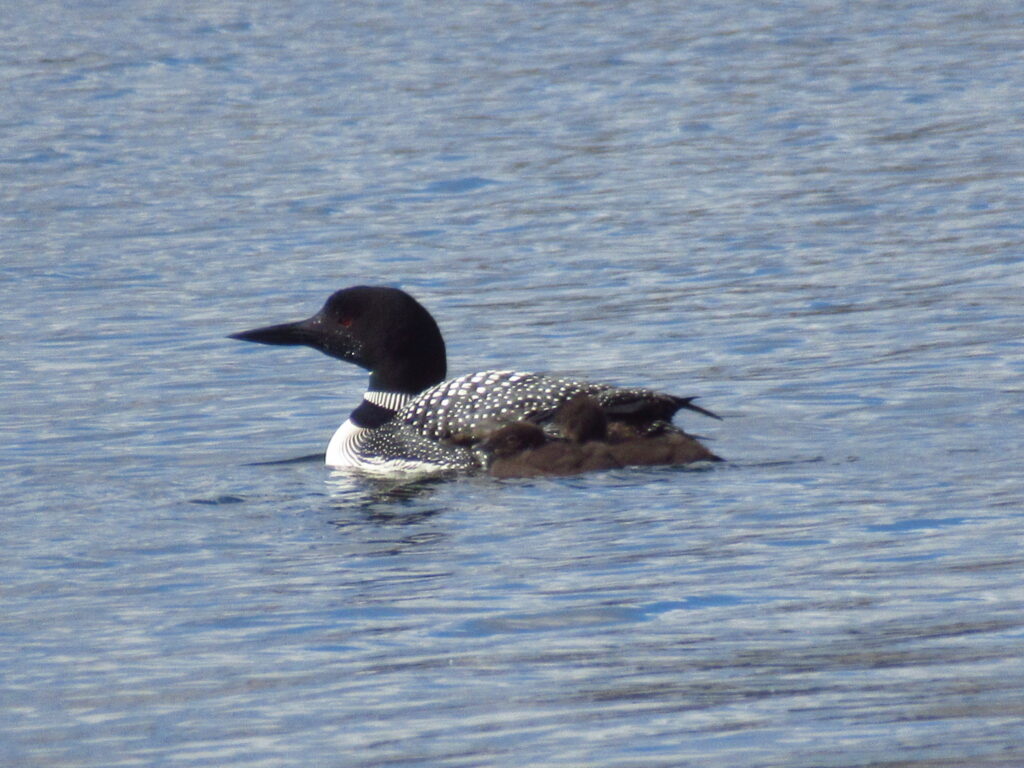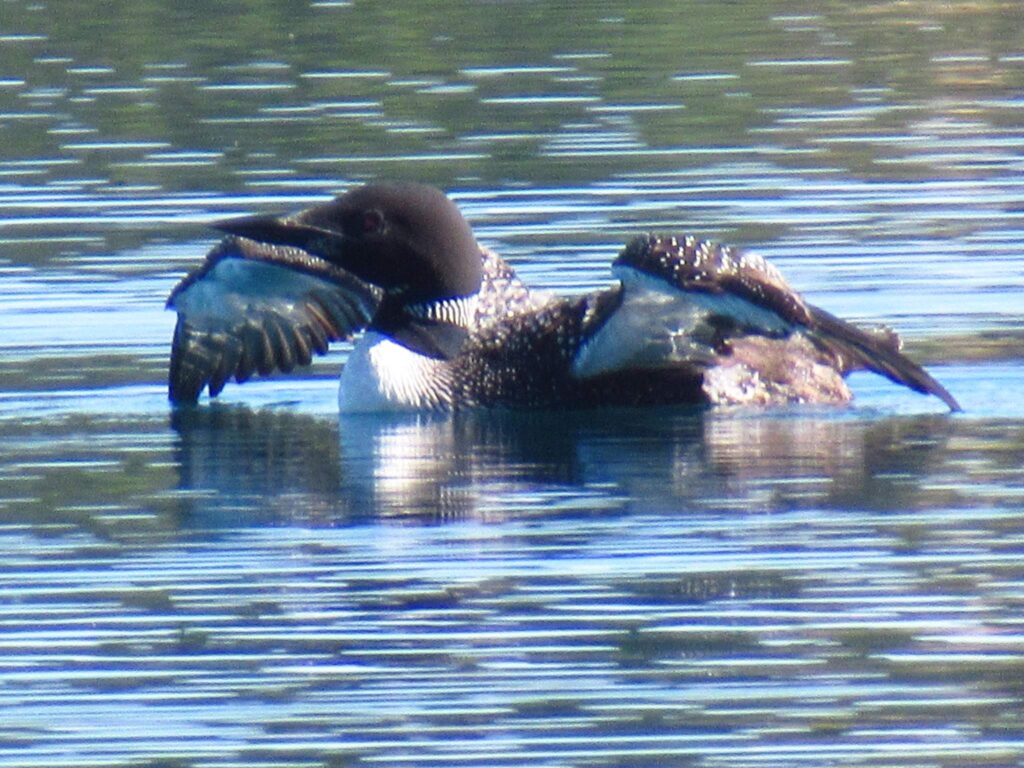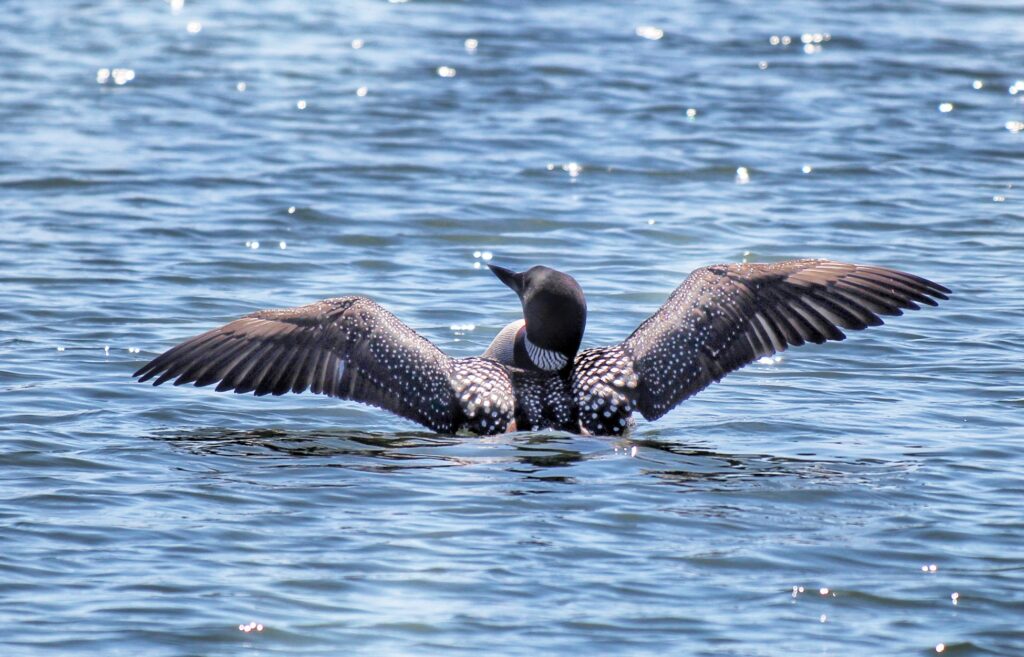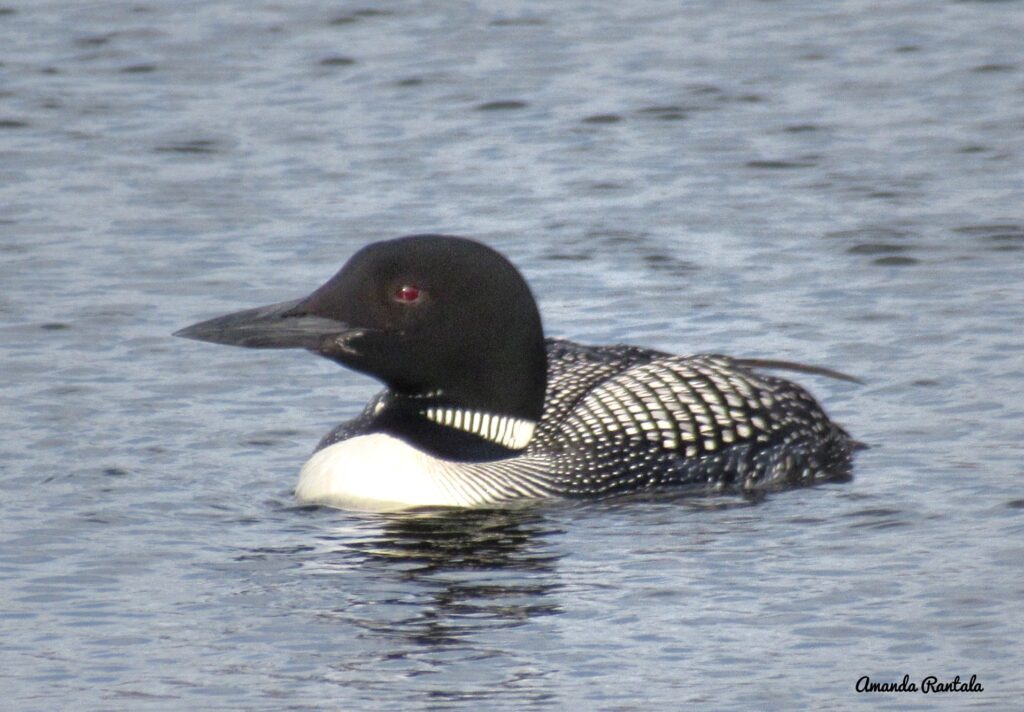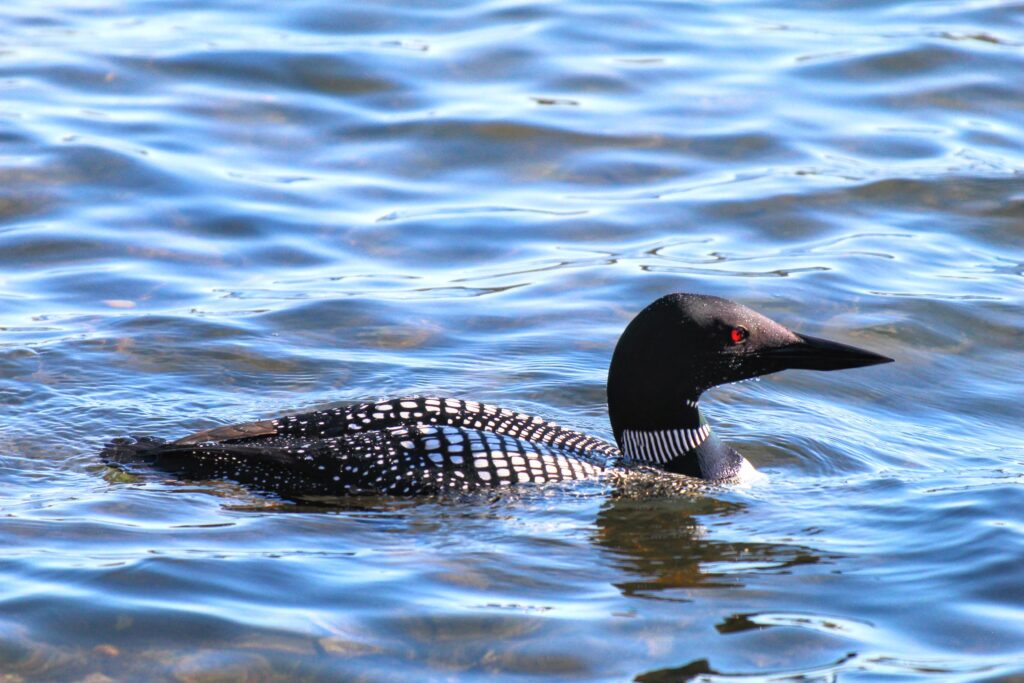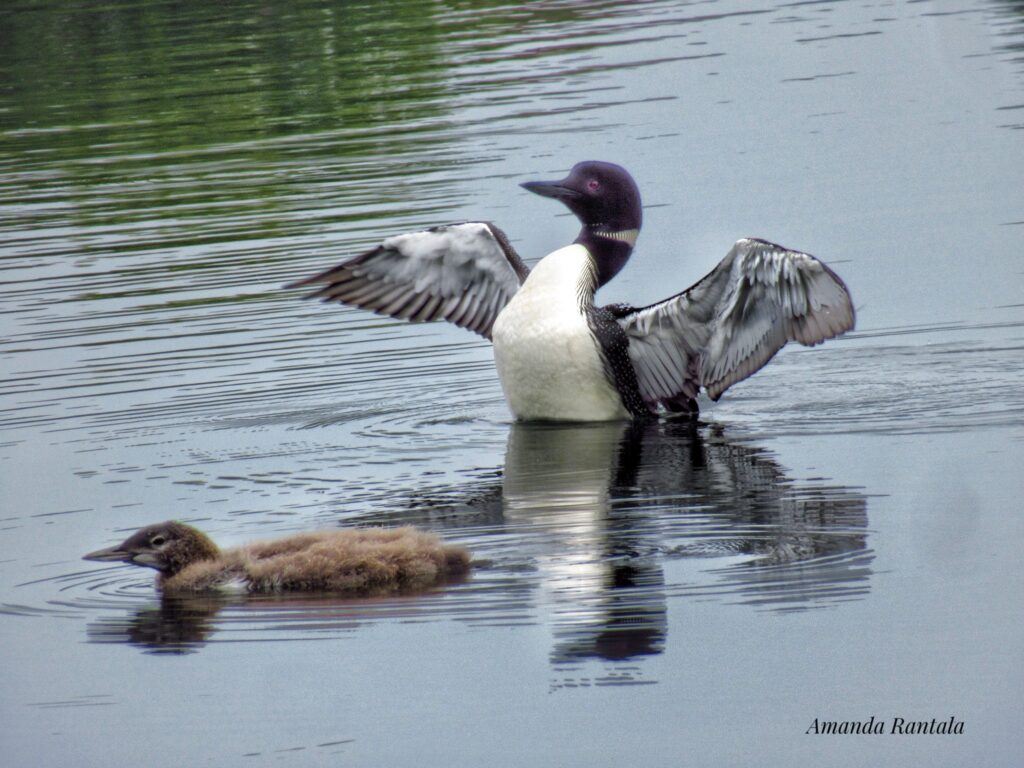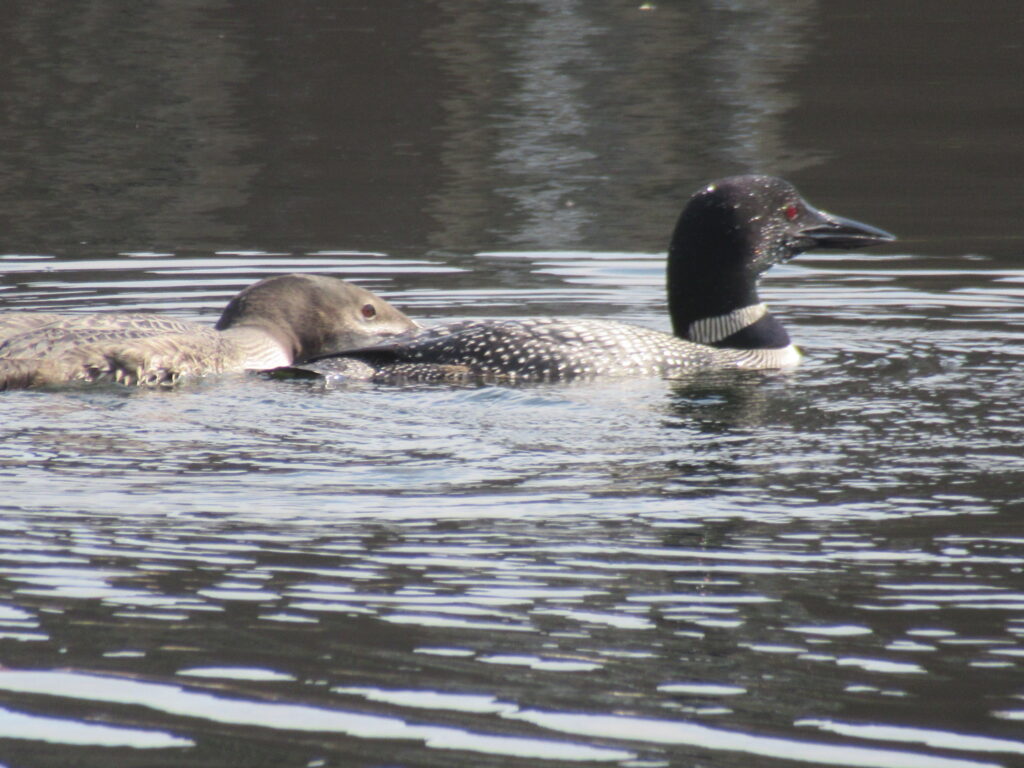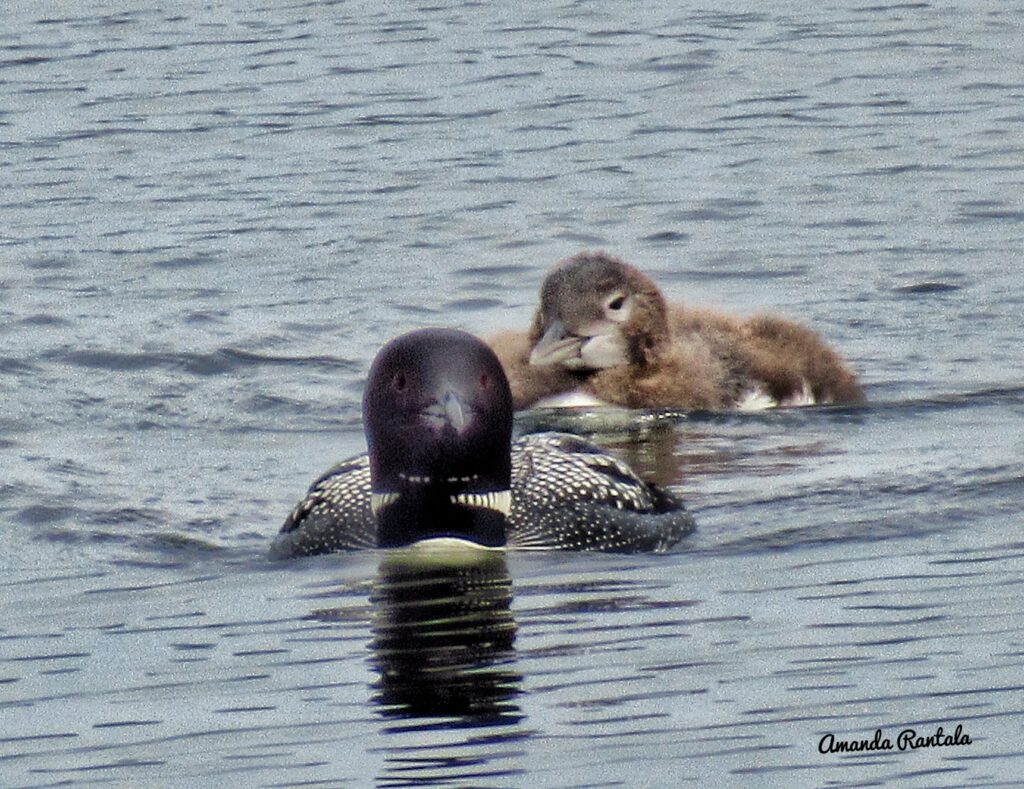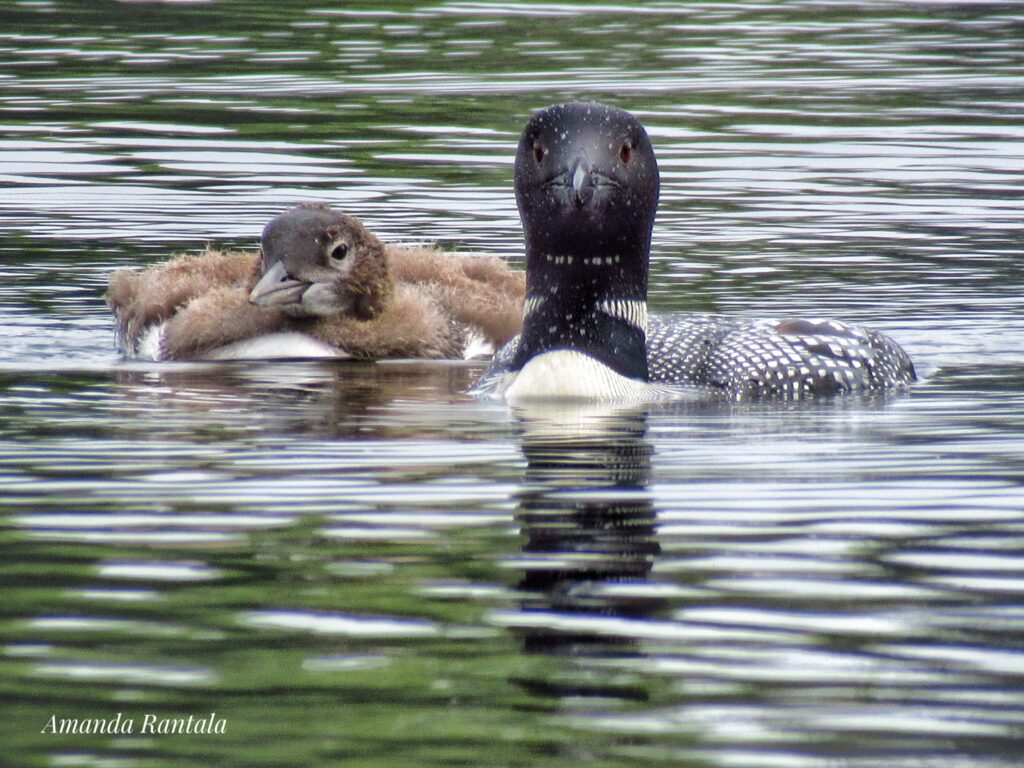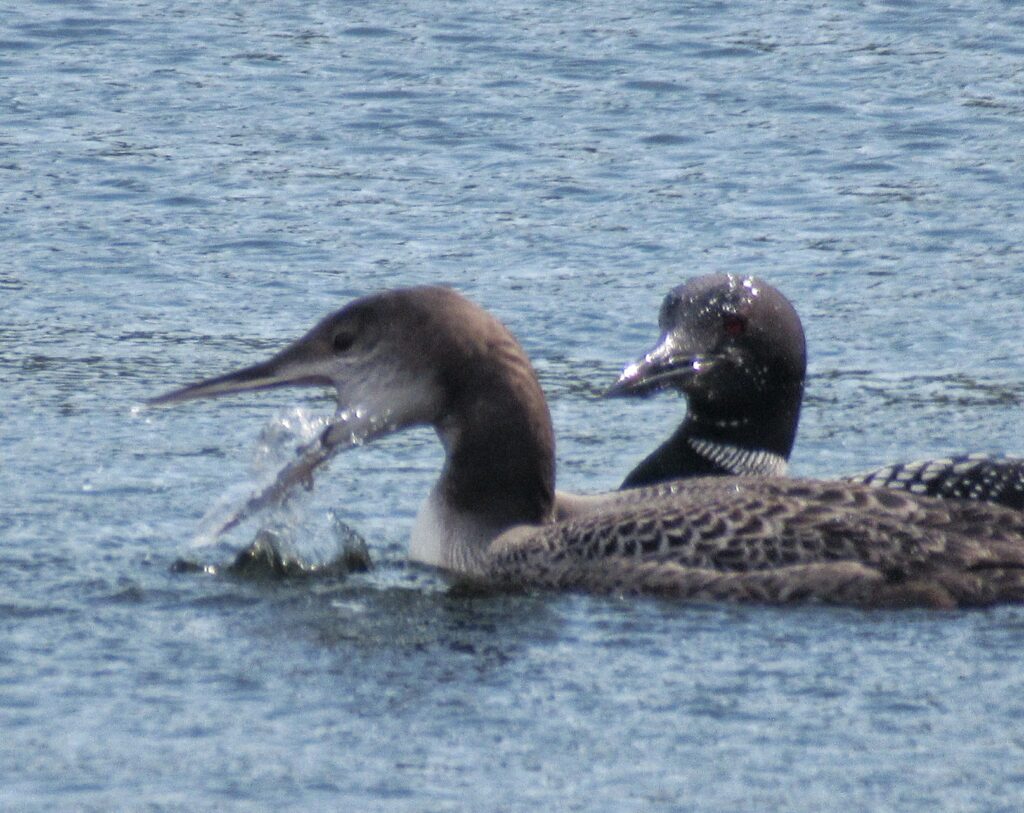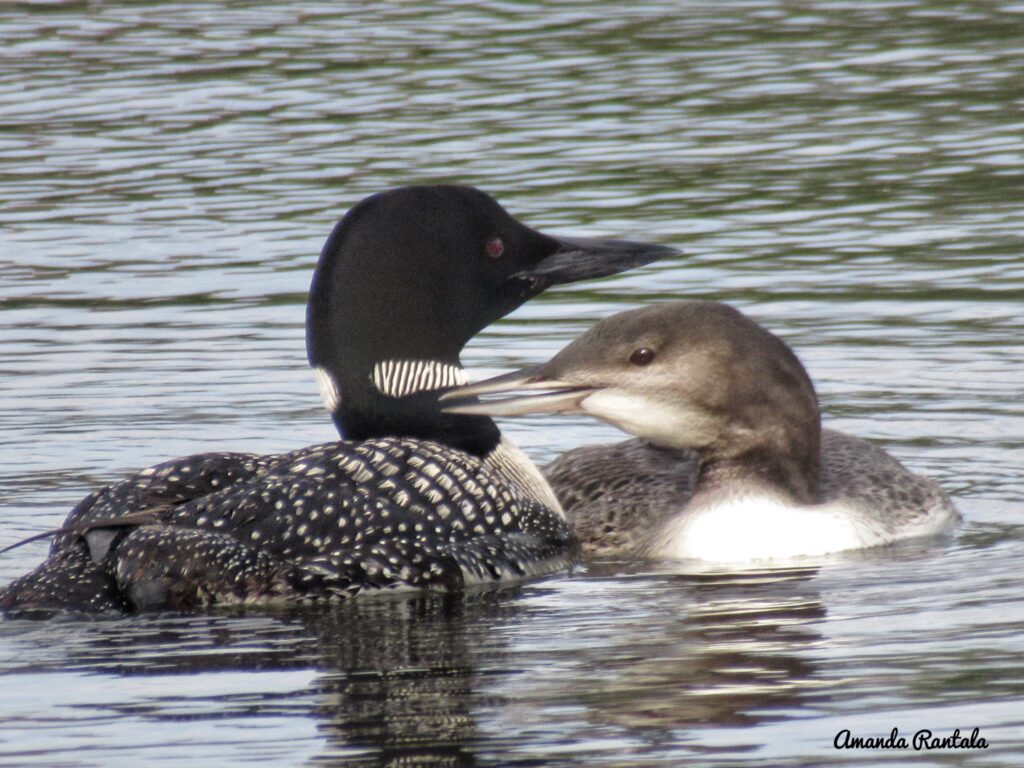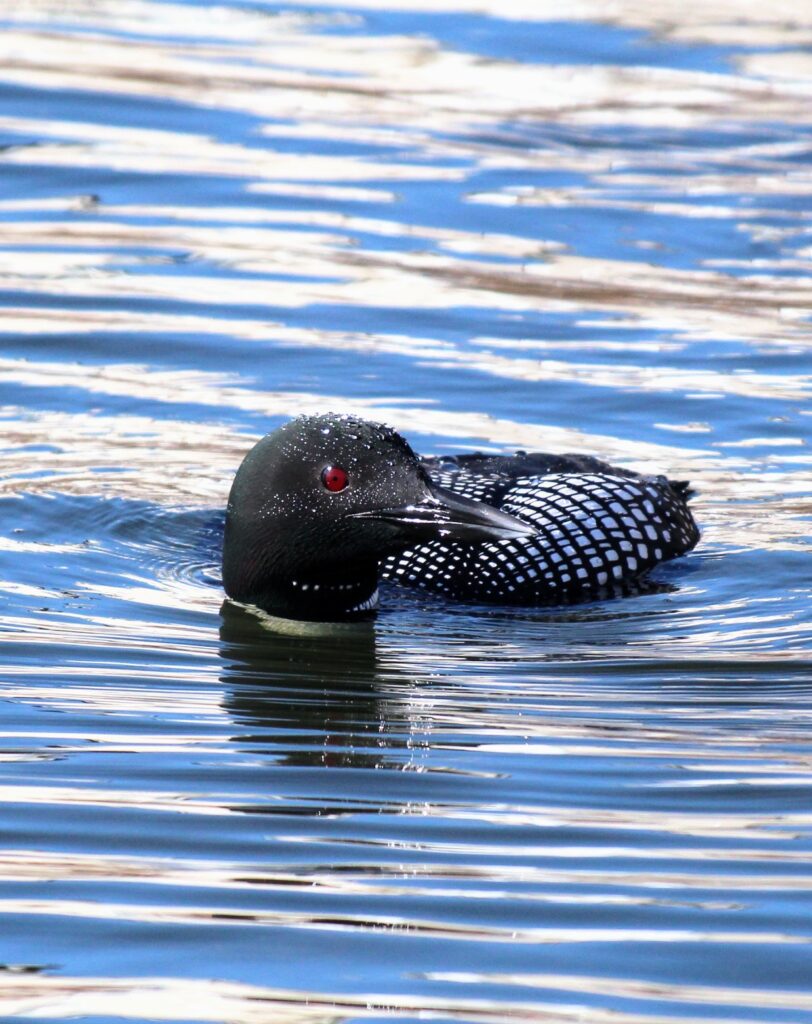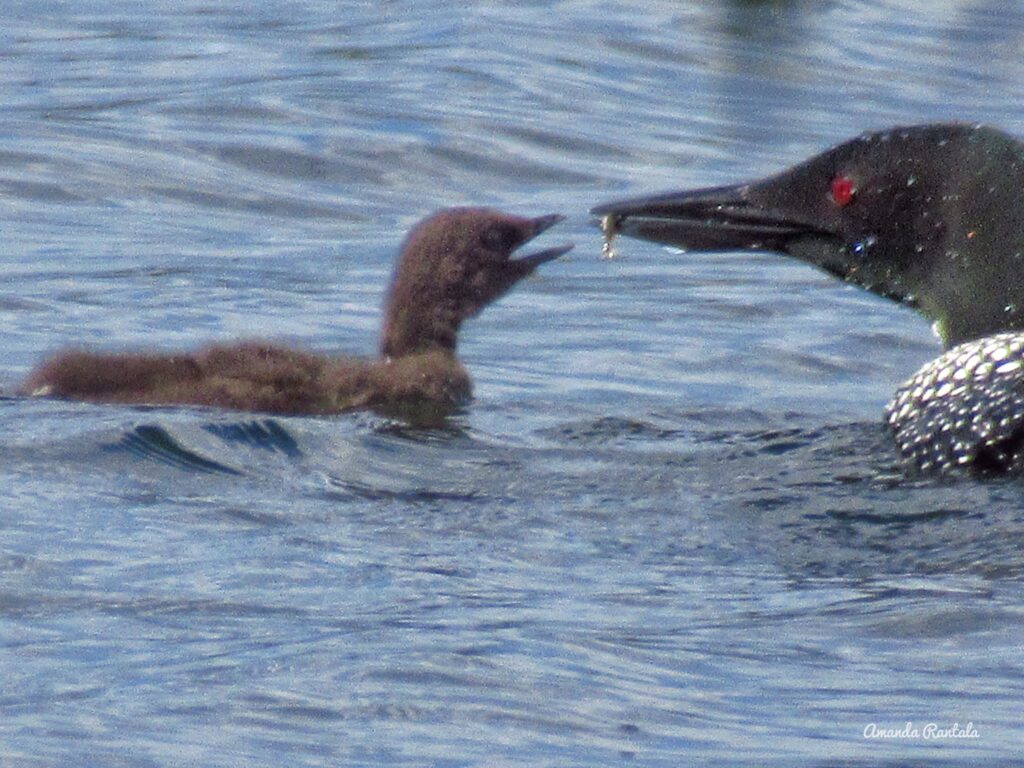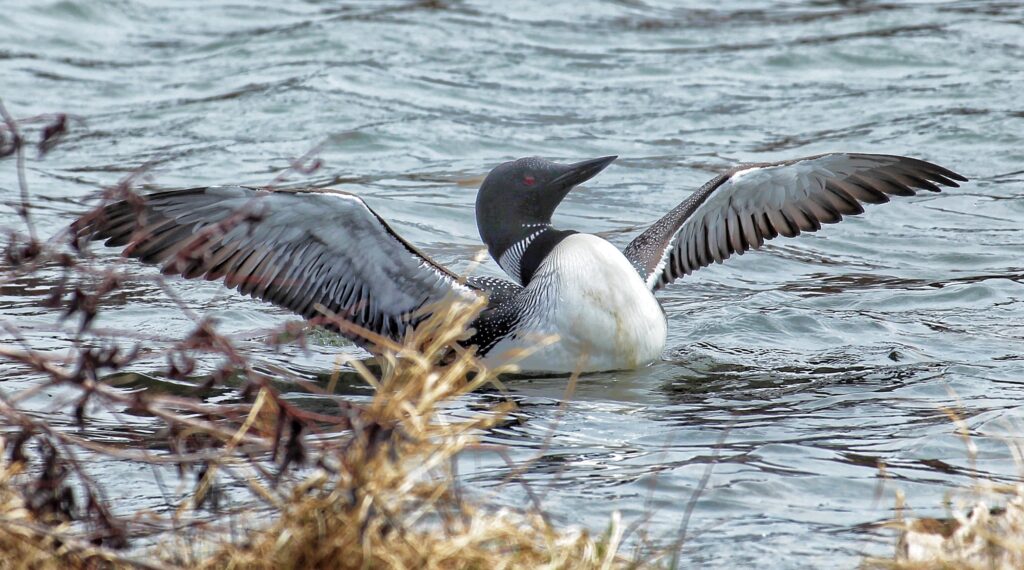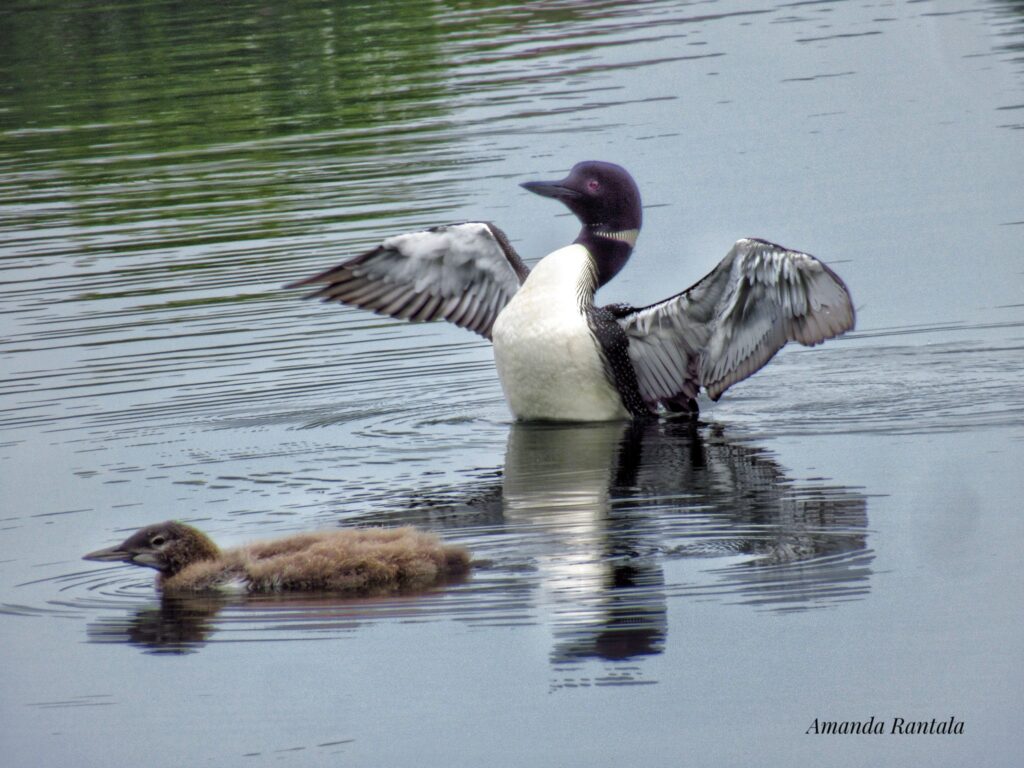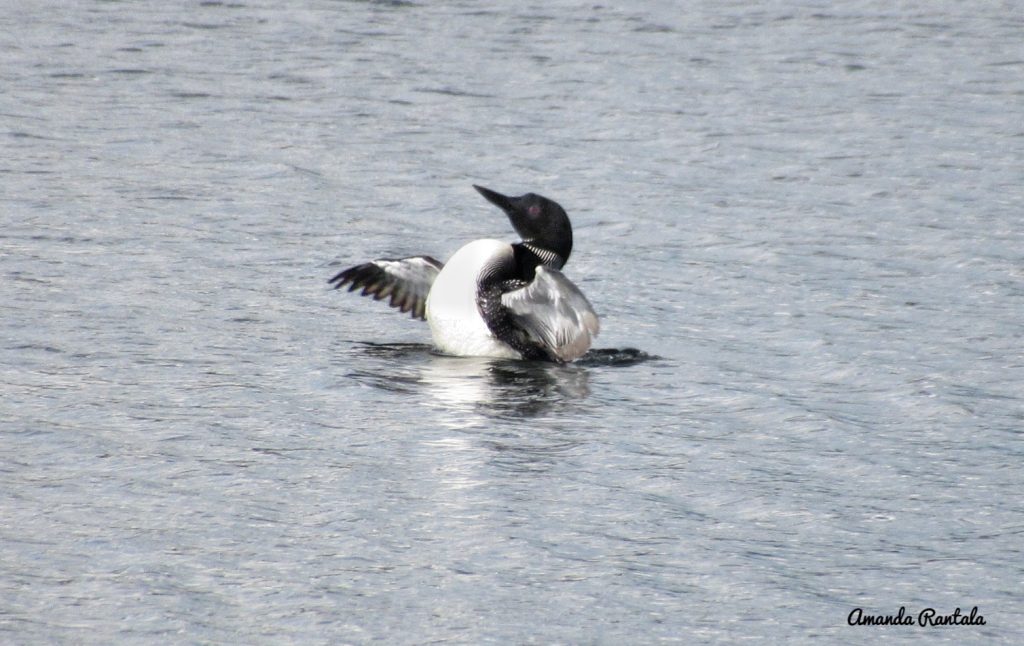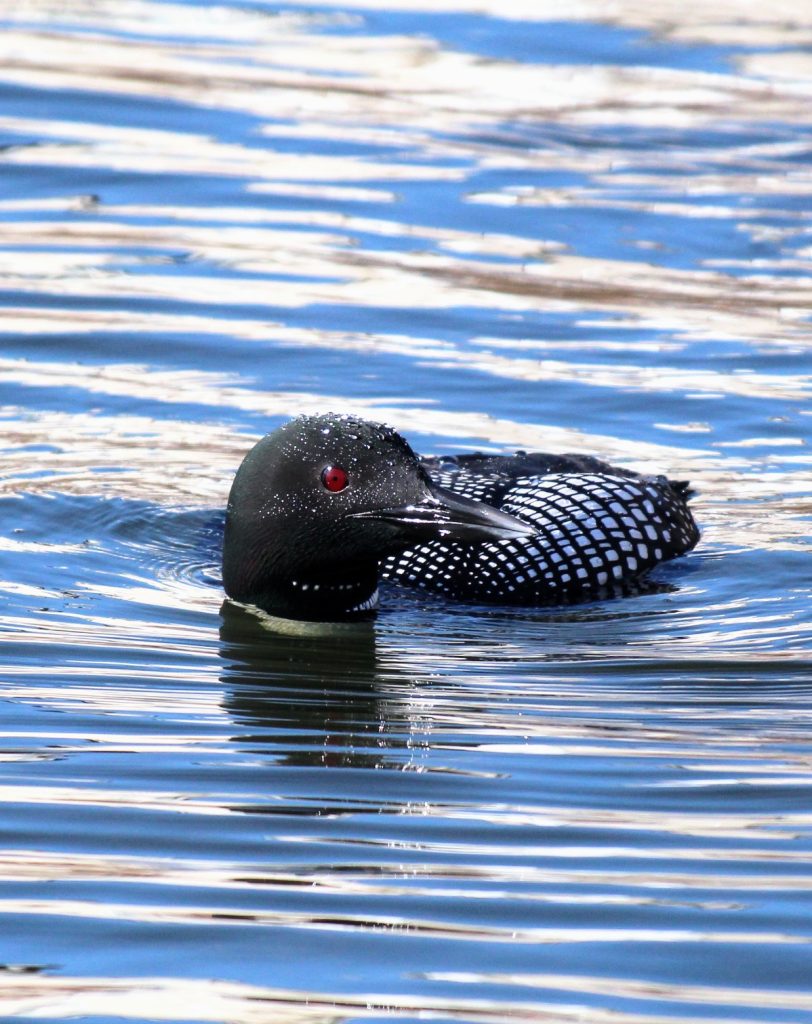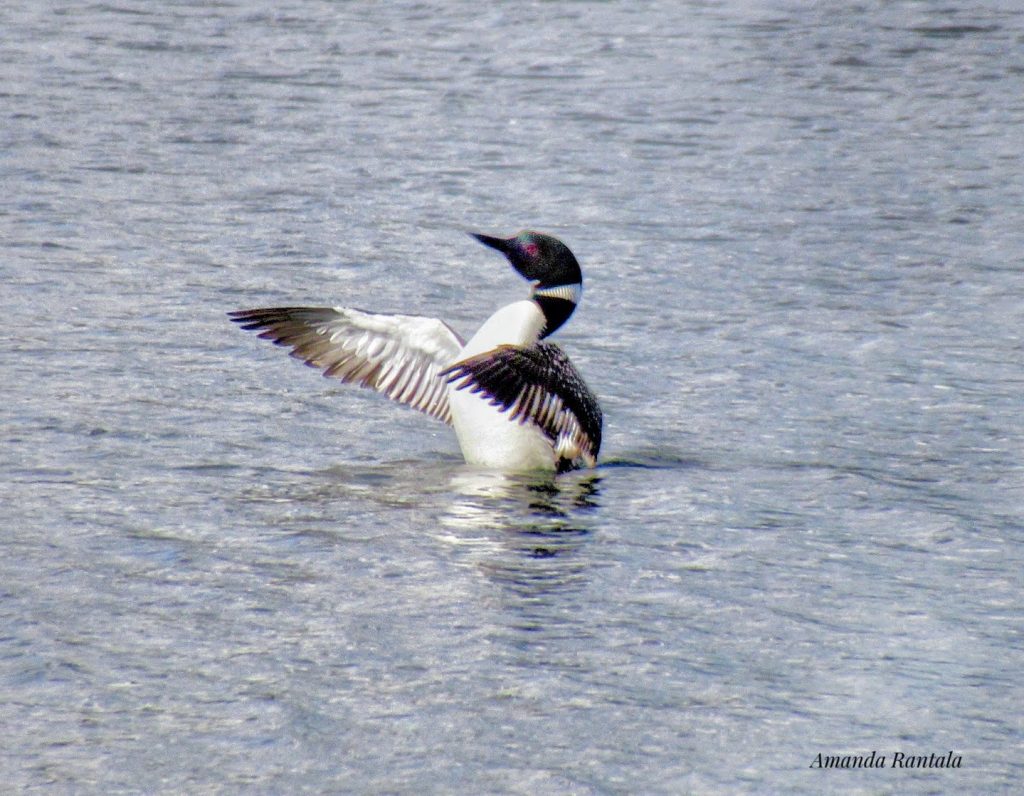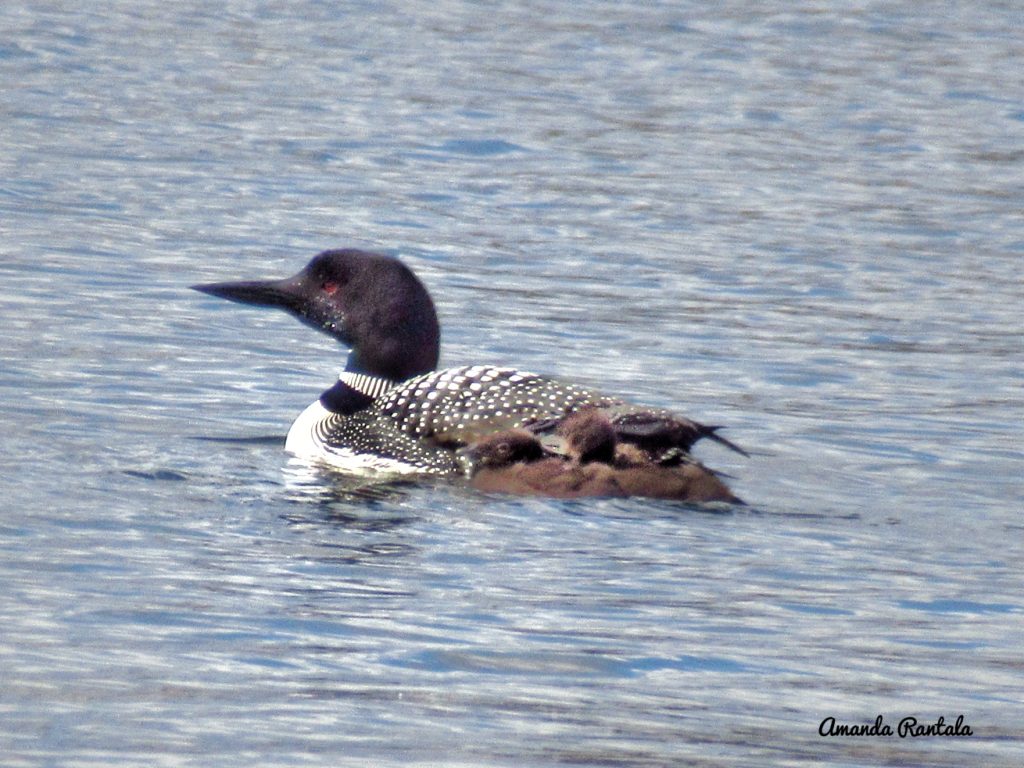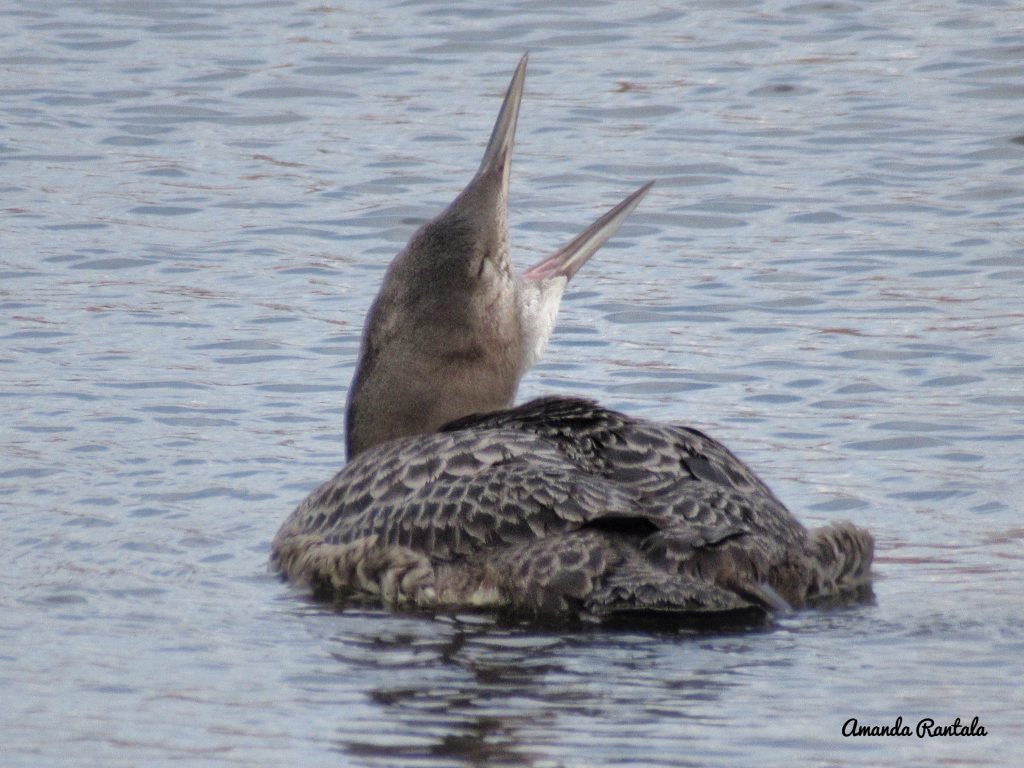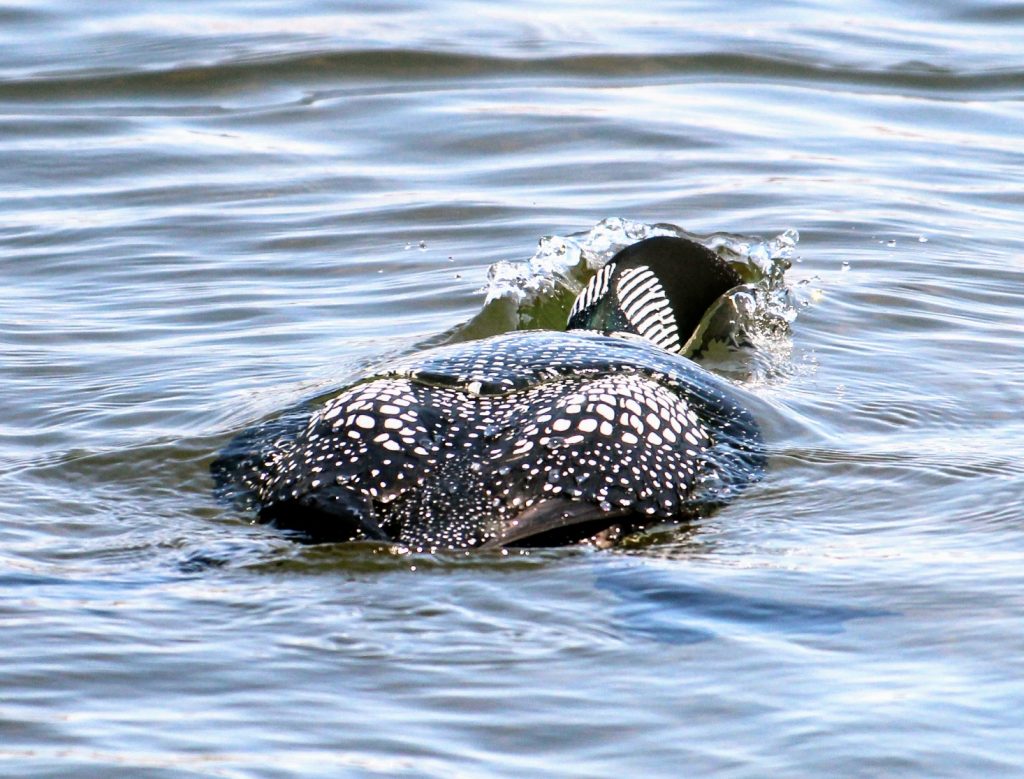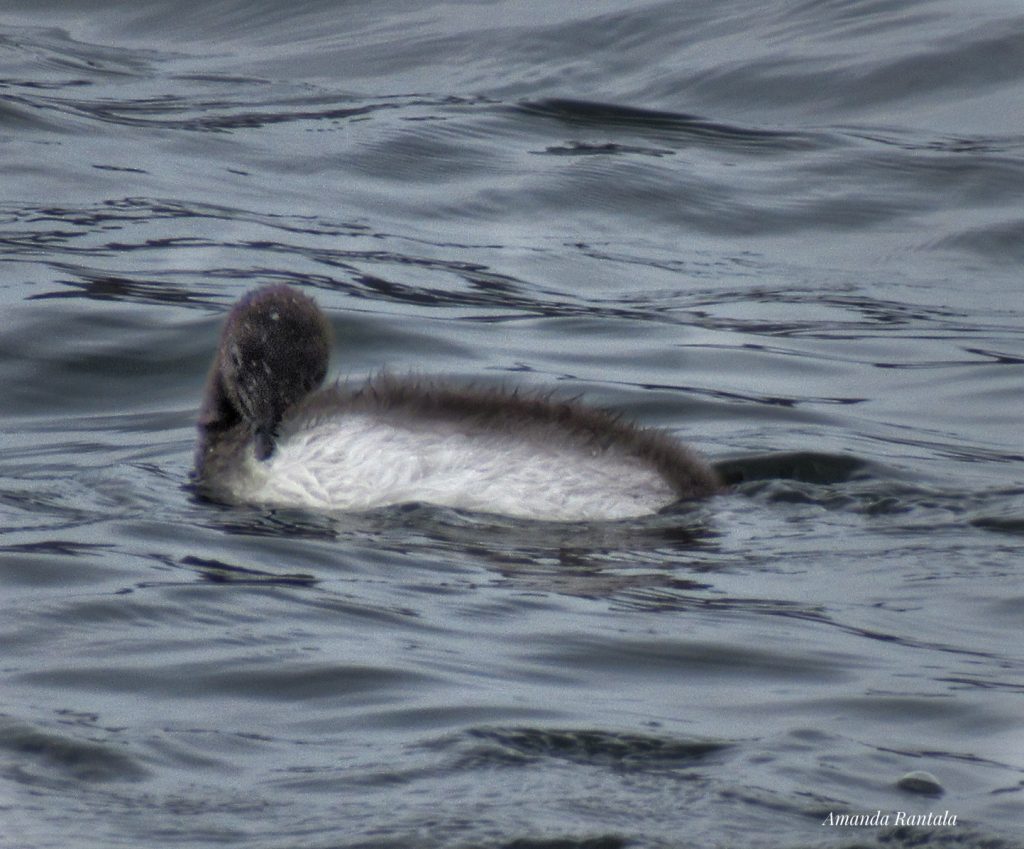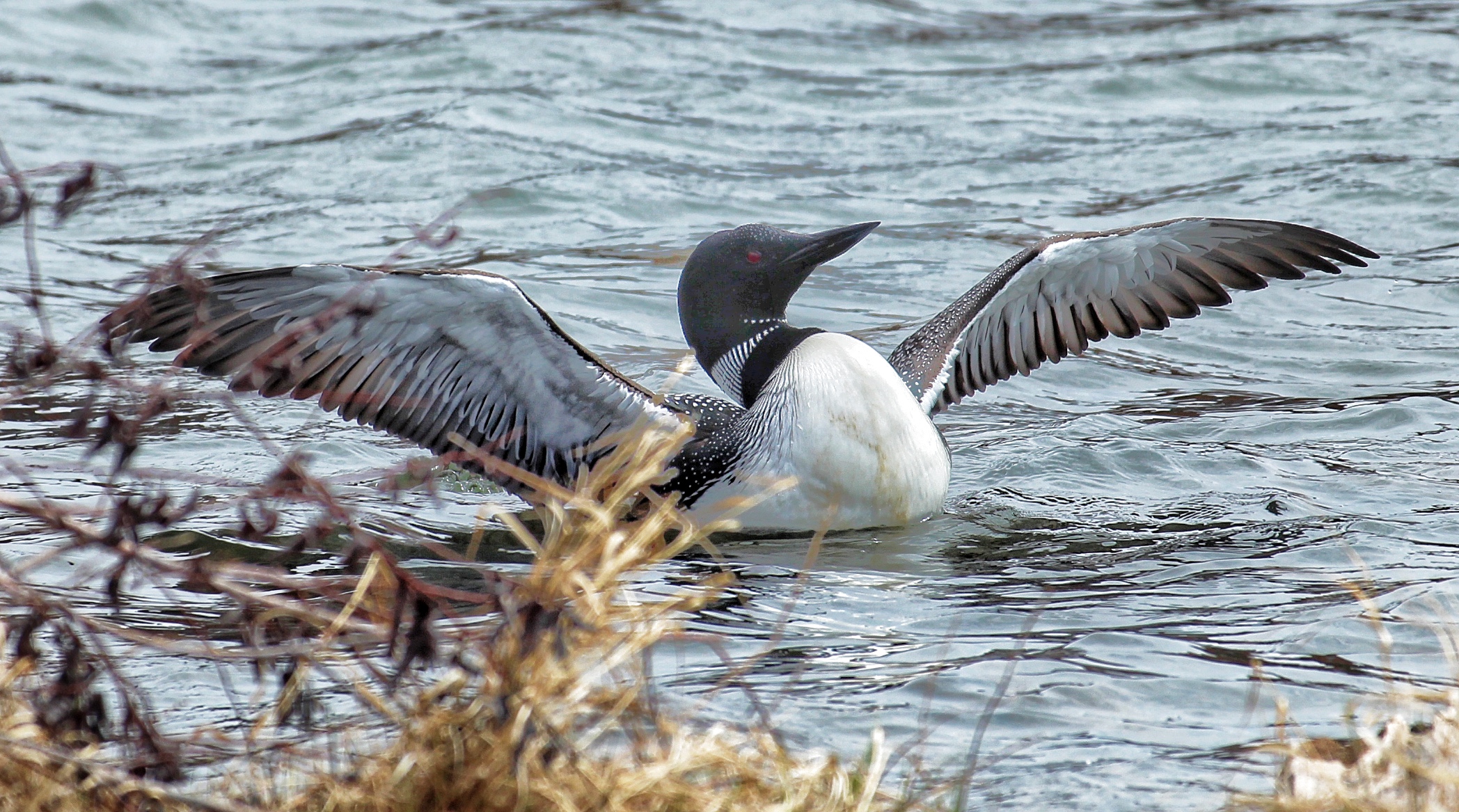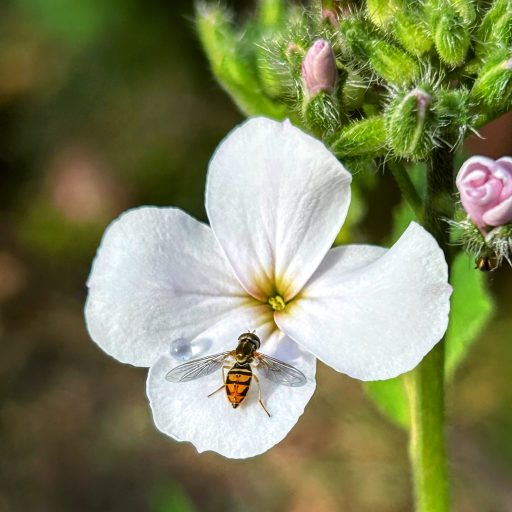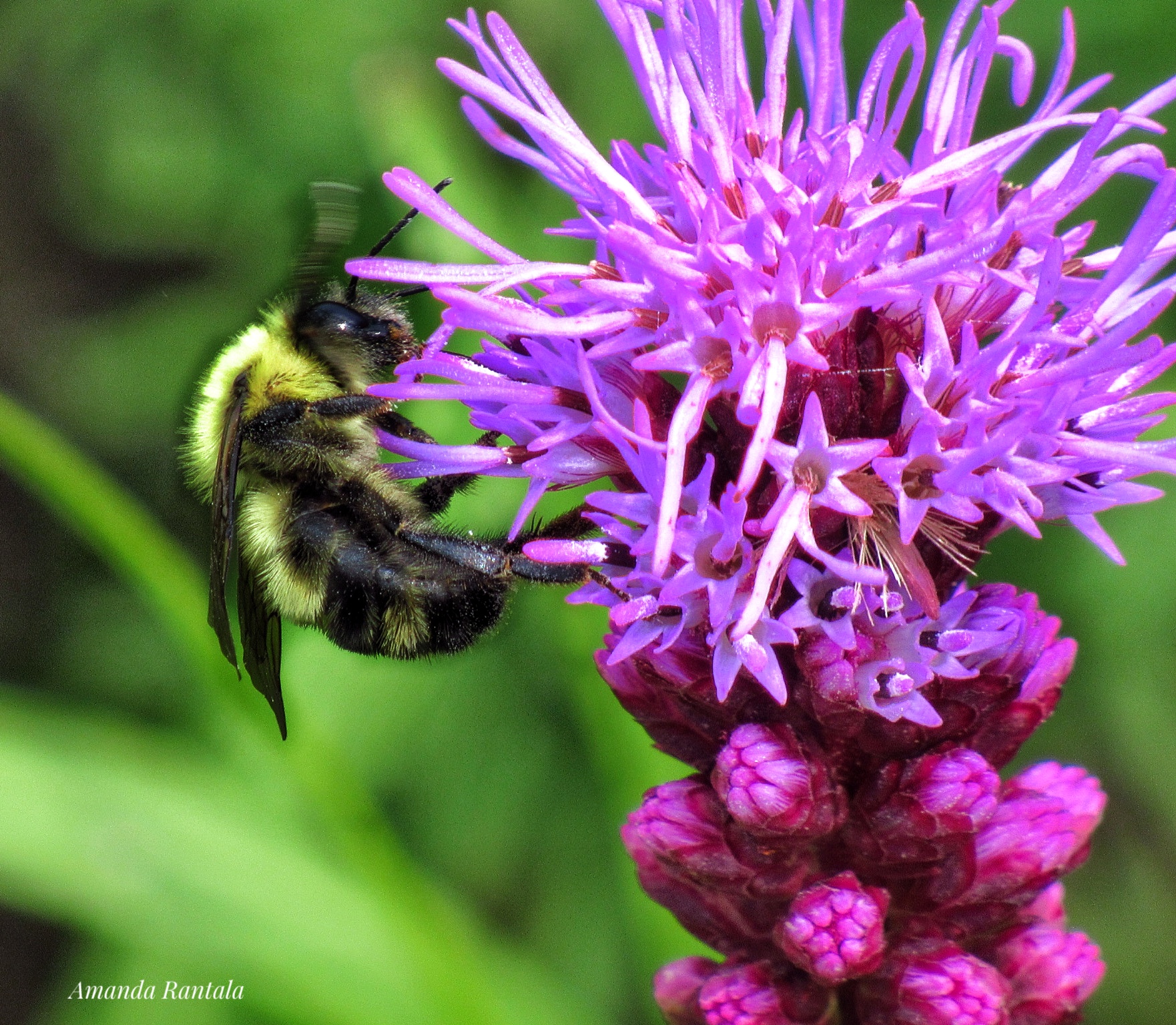Listen to the beauty of the loon call!
I’m a perfectionist when it comes to my own photography Some of these photos I spent hours trying to capture that perfect photo. I hope you enjoy!
LOONS
North America is home to five species of loons: the Red-throated Loon, the Pacific Loon, the Arctic Loon, the Yellow-billed Loon, and the Common Loon. Of these species, the Common Loon is the most widespread and well-known. It is the only loon species that breeds as far south as New Hampshire.
Loons are a migratory species that spend the breeding season on inland lakes and overwinter on the ocean. They arrive on their breeding lakes shortly after the ice goes out in the spring and remain late into the fall or early winter, often leaving for the ocean shortly before ice forms. Loons display high territory fidelity, and individuals typically return to the same breeding lake year after year. This often results in the same male and female loons pairing up and breeding together in consecutive years; however, contrary to popular belief, loons do not mate for life. If one member of a pair dies or is displaced by a rival, its mate will accept a new breeding partner.
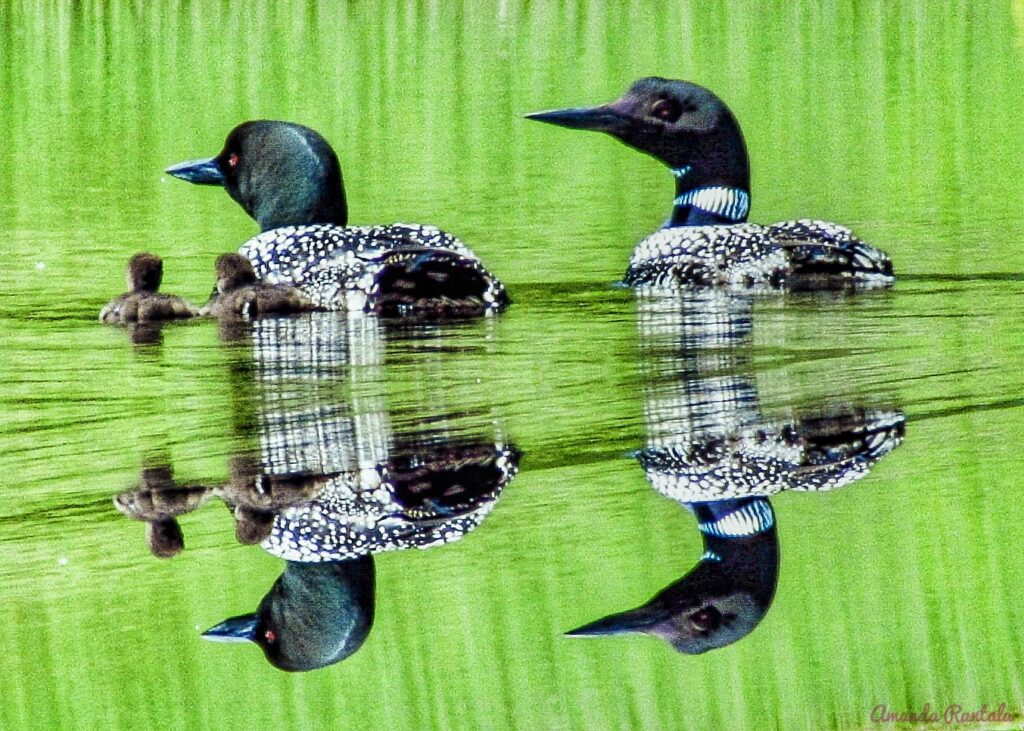
Common Loon Plumage and Body Structure
Male and female loons have identical plumage, which makes them nearly impossible to tell apart by sight alone. Although males are generally about 25% larger than females, this size difference is difficult to determine visually. In New Hampshire, adult loons weigh from 7 to 15 pounds and measure roughly 3 feet from bill tip to outreached feet. The skeleton and muscular systems of a loon are designed for swimming and diving. A loon’s legs are placed far back on its body, allowing for excellent swimming in water but making them ungainly on land. Loons have bones that are more dense than bones of most other flying birds. These heavy bones make loons less buoyant, which helps them to dive. The loon’s large webbed feet provide propulsion and steering underwater.
Common Loon Diet
During the breeding season, loons spend their days feeding, preening, resting, and caring for their young. At this time of year, common loon diet consists primarily of fish. Loons preferentially feed upon species such as yellow perch, pumpkinseed, and bluegill because their erratic swimming behavior makes them easy for loons to catch. They also consume suckers, catfish, smelt, and minnows. Although loons will opportunistically feed upon trout and salmon, these species are better able to evade capture due to their straight swimming patterns and do not make up a large percentage of the average loon’s diet.
In addition to fish, loons also eat crayfish, frogs, leeches, and snails. On their ocean wintering grounds, loon diet may include fish, crabs, snails, shrimp, marine invertebrates, and even lobster.
